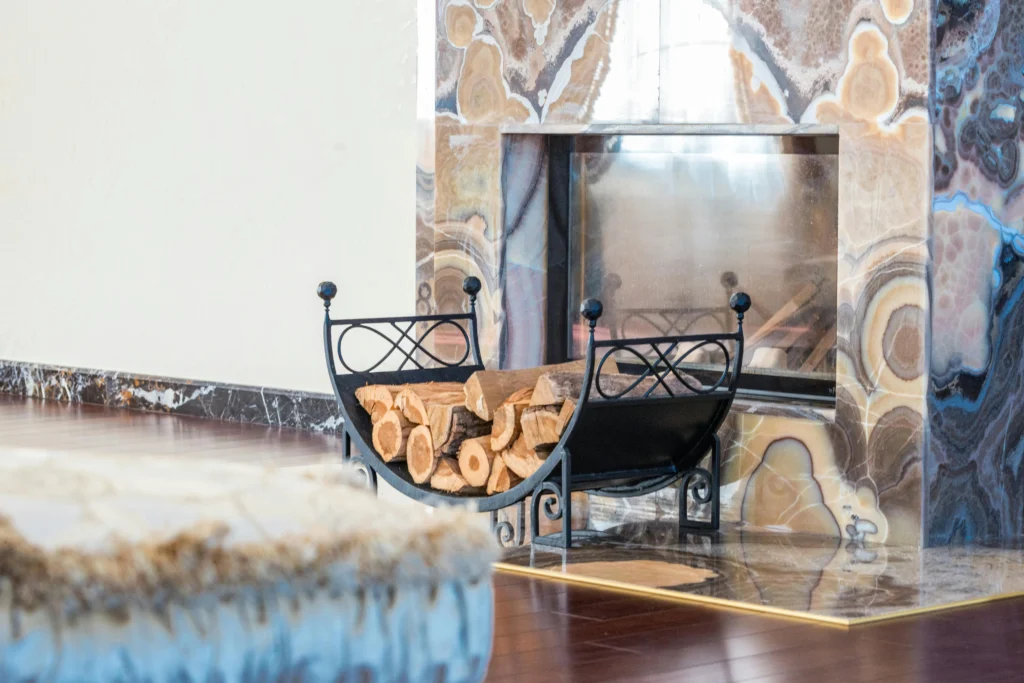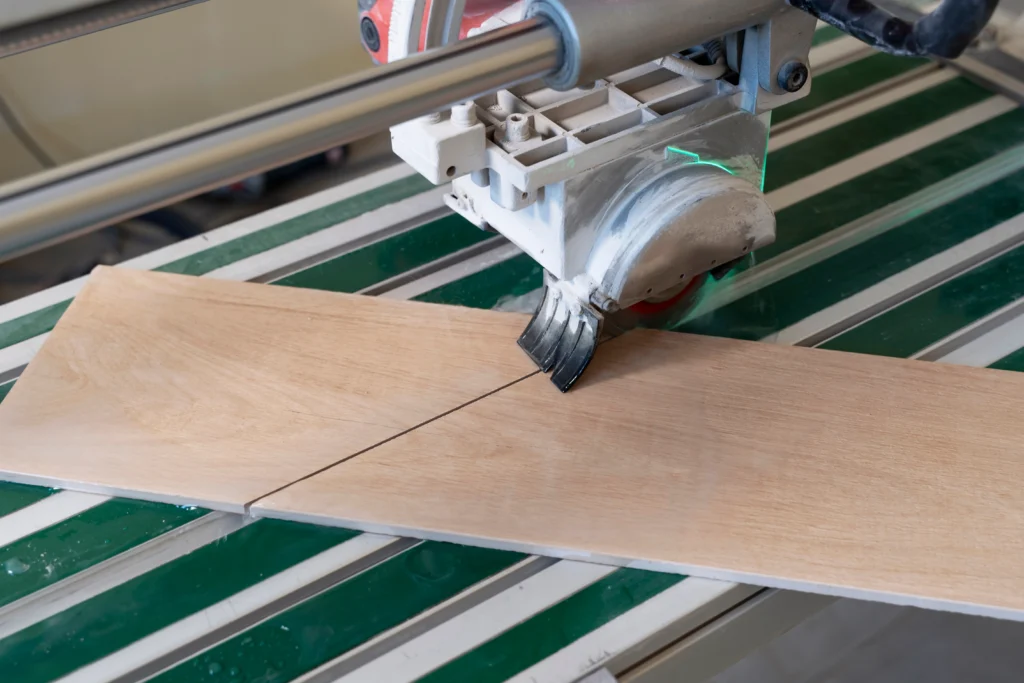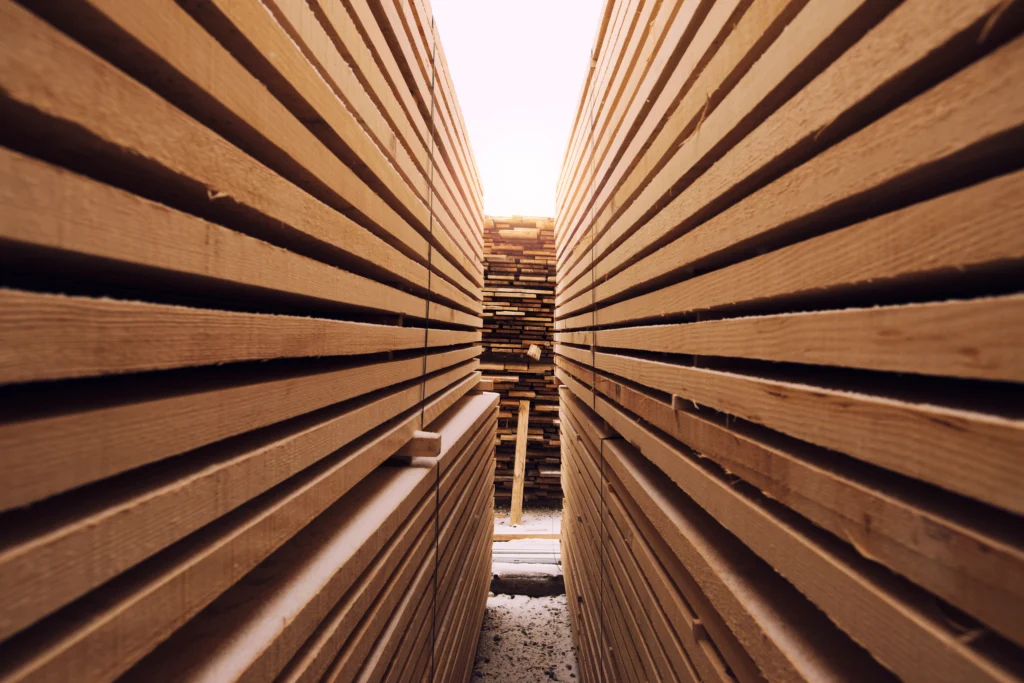When it comes to furniture and home interiors, the type of wood you choose plays a crucial role in determining the durability, style, and overall quality of your space.
Whether you’re shopping for a dining table, wardrobe, or flooring, understanding the differences between wood types can help you make an informed decision that aligns with your needs and budget.
Among the many options available, solid wood and engineered wood stand out as the two most popular choices. While solid wood is admired for its timeless appeal and unmatched strength, engineered wood has gained popularity for its affordability and versatility.
This growing debate between solid wood vs. engineered wood has left many homeowners wondering which option is better suited for their furniture or decor.
In this blog, we’ll explore the key differences, benefits, and ideal uses of both types of wood to help you choose the perfect material for your home.
Whether you prioritize natural beauty, durability, or cost-effectiveness, understanding these two materials will guide you toward a smarter purchase decision.
What is Solid Wood?

Solid wood refers to wood that comes directly from a tree without being processed or mixed with other materials.
It is crafted from a single piece of timber, making it one of the most natural and durable options for furniture and interiors. Unlike engineered wood, solid wood showcases the tree’s natural grain and texture, adding timeless beauty to any space.
Common Types of Solid Wood
Some popular types of solid wood used in furniture and home interiors include:
- Teak: Known for its strength, resistance to moisture, and natural golden hue, teak is a premium choice for both indoor and outdoor furniture.
- Oak: Highly durable and available in red and white varieties, oak is often used for classic furniture designs and flooring.
- Maple: Famous for its smooth texture and light color, maple is a versatile wood often used for cabinets, tables, and hardwood flooring.
- Walnut: Loved for its rich, dark brown tones and fine grain, walnut is a popular choice for high-end furniture.
Benefits of Solid Wood
- Durability and Longevity: Solid wood furniture can last for decades, often becoming heirloom pieces passed down through generations.
- Aesthetic Appeal: The natural grain and texture of solid wood add warmth and character to any interior design.
- Repairability: Solid wood can be sanded, polished, and refinished to restore its appearance, making it a long-term investment.
- Strength: It can withstand heavy use, making it ideal for tables, chairs, and bed frames.
Limitations of Solid Wood
- Cost: Solid wood tends to be more expensive compared to engineered wood due to its quality and natural sourcing.
- Maintenance: It requires regular care, such as polishing and cleaning, to maintain its look and prevent damage.
- Susceptibility to Moisture: Solid wood can warp, crack, or swell when exposed to excessive moisture or humidity.
- Weight: Furniture made from solid wood is often heavier, making it less convenient to move.
Solid wood remains a top choice for those who value quality, natural beauty, and longevity. However, it’s important to consider its cost and maintenance needs before making a decision.
What is Engineered Wood?

Engineered wood is a man-made wood product created by bonding wood fibers, particles, or veneers with adhesives under high pressure and heat.
Unlike solid wood, which is cut directly from a tree, engineered wood is manufactured to optimize durability, cost-effectiveness, and design versatility. It’s widely used in modern furniture and construction due to its consistent quality and adaptability.
How Engineered Wood is Made?
Engineered wood is produced by combining natural wood components with synthetic materials. Common types include:
- MDF (Medium-Density Fiberboard): Made from wood fibers and resin, MDF offers a smooth surface that is easy to paint or veneer.
- Plywood: Created by layering thin sheets of wood (veneers) in alternating grain directions, plywood is highly durable and resistant to warping.
- Particleboard: Made from wood particles and adhesive, particleboard is lightweight and cost-effective, often used in budget-friendly furniture.
Popular Types of Engineered Wood and Their Features
- MDF: Known for its smooth finish and uniform texture, MDF is ideal for cabinetry and decorative furniture pieces.
- Plywood: Praised for its strength and stability, plywood is commonly used in flooring, wall panels, and high-quality furniture.
- Particleboard: Lightweight and affordable, particleboard is best for shelves, flat-pack furniture, and temporary solutions.
- HDF (High-Density Fiberboard): Similar to MDF but denser, HDF is often used for flooring and high-traffic surfaces.
Benefits of Engineered Wood
- Affordability: Engineered wood is more cost-effective than solid wood, making it accessible for a wider range of budgets.
- Versatility: It can be manufactured in various sizes, finishes, and textures to suit different design needs.
- Stability: Unlike solid wood, engineered wood is less prone to warping, shrinking, or expanding due to changes in humidity or temperature.
- Eco-Friendly Options: Many engineered wood products are made from recycled wood materials, reducing waste.
Limitations of Engineered Wood
- Lower Longevity: Engineered wood may not last as long as solid wood, especially in high-impact or moisture-prone environments.
- Susceptibility to Damage: It’s less resistant to scratches and dents compared to solid wood.
- Refinishing Challenges: Unlike solid wood, most engineered wood surfaces cannot be sanded or refinished multiple times.
- Moisture Sensitivity: Some types, like particleboard, may swell or deteriorate if exposed to water.
Engineered wood is a practical solution for modern homes and offices, offering a balance of affordability, design options, and performance. Understanding its features and limitations can help you choose the right type for your specific needs.
Durability and Strength
When it comes to durability and strength, both solid wood and engineered wood have their advantages, depending on the intended use.
Here’s a detailed comparison to help you understand which is better suited for your furniture needs.
Solid Wood: Built for Long-Term Durability
Solid wood is renowned for its exceptional strength and longevity. Since it’s crafted from a single piece of natural wood, it can withstand heavy use and resist wear and tear over time.
This makes it an excellent choice for heavy-duty furniture like dining tables, bed frames, and cabinets.
- Advantages:
- Highly durable and can last for decades with proper care.
- Can be sanded, refinished, or repaired multiple times, extending its life.
- Resistant to minor scratches or dents due to its dense composition.
- Limitations:
- Prone to warping, cracking, or swelling in environments with high moisture or humidity.
- Requires regular maintenance to preserve its appearance and strength.
Solid wood is ideal for long-term use, especially in furniture that needs to handle weight or frequent use, such as wardrobes or office desks.
Engineered Wood: Designed for Stability
Engineered wood offers impressive stability and resistance to environmental changes, such as humidity or temperature fluctuations.
While it may not match the sheer strength of solid wood, its layered construction provides reliable durability for many applications.
- Advantages:
- Less prone to warping, shrinking, or expanding, making it suitable for humid climates.
- Lightweight yet sturdy, making it easier to move or assemble.
- Cost-effective for furniture that doesn’t require heavy-duty performance.
- Limitations:
- Generally less durable than solid wood for long-term use.
- Surface may chip, scratch, or dent more easily.
- Difficult to repair or refinish if damaged.
Engineered wood is best suited for light to medium-use furniture, such as shelves, study desks, or wall-mounted cabinets.
Which is Better for Long-Term Use?
For furniture intended to last for decades or withstand heavy daily use, solid wood is the superior choice. Its durability and ability to be refinished make it a long-term investment.
However, engineered wood is a practical alternative for budget-friendly furniture or projects where stability in varying climates is essential.
By understanding the strengths and limitations of each type of wood, you can make an informed decision that aligns with your furniture needs and lifestyle.
Cost Comparison
When choosing between solid wood and engineered wood for furniture, cost plays a significant role.
Each option caters to different budgets, and understanding the price variations can help you make the right decision.
Solid Wood: Premium Pricing for Long-Term Value
Solid wood furniture is often considered a luxury due to its durability, natural beauty, and ability to last for generations. However, this quality comes at a higher cost.
Why Solid Wood Costs More?
- Made from natural, single-source wood like teak, oak, or maple.
- Time-intensive crafting and finishing processes.
- High durability and ability to be refinished multiple times.
Affordability Factors:
- Solid wood is a long-term investment; while it costs more upfront, it may save you money in the long run due to its longevity.
- Popular in high-end furniture for its classic appeal and robustness.
- Solid wood furniture is ideal for buyers who prioritize quality, longevity, and timeless aesthetics over budget constraints.
Engineered Wood: Affordable and Practical
Engineered wood is a budget-friendly alternative that mimics the look of solid wood without the hefty price tag. Its cost efficiency makes it popular for modern, budget-conscious households.
Why Engineered Wood is Cheaper?
- Made from wood by-products (e.g., MDF, plywood, particleboard) combined with adhesives, which reduces production costs.
- Manufactured in large quantities, making it widely available and cost-efficient.
- Requires less labor-intensive finishing compared to solid wood.
Affordability Factors:
- Perfect for furniture that doesn’t require heavy-duty use or long-term durability.
- Ideal for renters, first-time buyers, or those furnishing smaller spaces like apartments or home offices.
Engineered wood allows you to achieve a modern look at a fraction of the cost of solid wood furniture.
Budget Considerations: Which One Should You Choose?
- If you’re on a tight budget: Engineered wood is an economical choice, especially for trendy furniture that may need replacing or updating in a few years.
- If you’re investing in long-term furniture: Solid wood offers greater value despite its higher upfront cost, thanks to its durability and timeless appeal.
By understanding the cost differences, you can make an informed decision based on your budget and priorities, ensuring you get the best value for your investment.
Appearance and Aesthetics
When choosing furniture, the way it looks plays a crucial role in complementing your home décor. Both solid wood and engineered wood offer unique aesthetic advantages, making them suitable for different interior styles.
The Natural Beauty of Solid Wood
Solid wood is celebrated for its timeless elegance and authentic charm. Since it’s crafted from a single piece of natural wood, every item showcases unique grains, patterns, and textures that add character to your furniture.
Key Aesthetic Features:
- Warm, rich tones that develop a beautiful patina over time.
- Visible natural imperfections, like knots and grains, that make each piece one-of-a-kind.
- Ideal for classic or rustic home décor styles, including farmhouse, traditional, or vintage themes.
How it Fits:
Solid wood seamlessly enhances spaces where a natural, warm, and luxurious vibe is desired, such as dining rooms, living areas, or study rooms. It pairs well with neutral or earthy tones to create a sophisticated look.
The Design Flexibility of Engineered Wood
Engineered wood offers unmatched versatility in design, making it a popular choice for contemporary interiors. Its manufacturing process allows for a variety of finishes, colors, and textures, mimicking the look of natural wood while offering greater customization.
Key Aesthetic Features:
- Available in a wide range of finishes, such as glossy, matte, or textured surfaces.
- Can mimic high-end woods like teak or mahogany without the premium cost.
- Perfect for modern, minimalist, or industrial-style interiors.
How it Fits:
Engineered wood furniture works well in spaces where a sleek, trendy, and uniform appearance is preferred. Its lightweight design makes it ideal for compact urban homes, office spaces, or modular furniture setups.
Which is Best for Your Home Decor?
- Choose solid wood if you want furniture with natural charm, rich grains, and timeless appeal. It’s a great fit for spaces that prioritize authenticity and warmth.
- Opt for engineered wood if you prefer modern, affordable, and customizable furniture that can adapt to changing décor trends.
By understanding the aesthetic differences between solid wood and engineered wood, you can select furniture that perfectly complements your home’s style and personality.
Maintenance and Care
Proper maintenance is essential to keep your furniture looking great and lasting longer. Both solid wood and engineered wood furniture require care, but the methods and effort involved can differ.
Here’s a detailed guide to maintaining each type of wood and ensuring its longevity.
Maintenance for Solid Wood Furniture
Solid wood furniture is known for its durability, but it requires consistent care to preserve its natural beauty and prevent damage.
Tips for Cleaning Solid Wood:
- Dust regularly using a soft, dry cloth to prevent buildup.
- Use a damp cloth for cleaning, followed by a dry one to avoid moisture damage.
- Avoid harsh chemical cleaners; instead, opt for mild wood-safe products.
Protecting Solid Wood:
- To prevent fading and warping, keep furniture out of direct sunlight.
- Use coasters, placemats, or tablecloths to protect surfaces from scratches, heat, or spills.
- Apply furniture polish or wax occasionally to maintain the wood’s shine and protect it from drying out.
Special Care:
Solid wood is sensitive to temperature and humidity changes. Use a dehumidifier in humid climates or a humidifier in dry ones to prevent cracks or warping.
Maintenance for Engineered Wood Furniture
Engineered wood furniture is designed to be low-maintenance, making it a popular choice for busy households. However, it still needs proper care to maintain its finish and functionality.
Tips for Cleaning Engineered Wood:
- Wipe with a soft, damp cloth and avoid soaking the surface to prevent water damage.
- Use a gentle cleaning solution suitable for laminate or veneer finishes.
- Dry immediately after cleaning to protect the edges from moisture.
Protecting Engineered Wood:
- Avoid placing heavy objects on the furniture to prevent dents or warping.
- Use felt pads under decorative items or appliances to prevent scratches.
- Keep it in a dry area to prevent the adhesives from weakening due to moisture exposure.
Special Care:
Engineered wood is more resistant to temperature and humidity changes than solid wood but can still swell or delaminate with excessive moisture exposure. Use it indoors and avoid prolonged exposure to extreme conditions.
Which One is Easier to Maintain?
- Solid wood requires more attention due to its sensitivity to environmental factors but rewards you with timeless beauty when cared for properly.
- Engineered wood is easier to clean and maintain, making it ideal for those who want low-maintenance furniture for everyday use.
By following these maintenance tips, you can keep your furniture looking fresh and functional, ensuring that it stays a valuable part of your home for years to come.
Environmental Impact
When choosing between solid wood and engineered wood, considering the environmental impact is essential. Sustainability, resource conservation, and eco-friendliness play a big role in modern furniture choices.
Here’s how each type of wood compares from an environmental perspective.
Solid Wood and the Environment
Solid wood is sourced directly from trees, which makes it a natural and renewable resource. However, its environmental impact depends on how the wood is harvested and processed.
Sustainability Factors for Solid Wood:
- Eco-friendly when responsibly sourced: Solid wood can be sustainable if obtained from forests certified by organizations like the Forest Stewardship Council (FSC).
- Long lifespan: Solid wood furniture is highly durable and can last for decades, reducing the need for frequent replacements.
- Energy-intensive production: Processing and transportation of solid wood require more energy compared to engineered wood.
Environmental Concerns:
- Overharvesting of trees for solid wood can lead to deforestation and habitat destruction.
- Unsustainable practices can strain natural resources, especially for rare hardwoods like teak and mahogany.
Engineered Wood and the Environment
Engineered wood, such as MDF, plywood, and particleboard, is made using wood scraps, fibers, and adhesives. It’s designed to make use of by-products and minimize waste.
Sustainability Factors for Engineered Wood:
- Efficient use of resources: Engineered wood repurposes leftover wood materials, reducing waste and maximizing resource use.
- Reduced demand for timber: Since it requires fewer trees for production, engineered wood can help reduce deforestation.
- Recyclable options: Some engineered wood products can be recycled, further contributing to sustainability.
Environmental Concerns:
- Adhesives and chemicals: The production of engineered wood involves resins and adhesives, which may release volatile organic compounds (VOCs) into the air, impacting indoor air quality.
- Shorter lifespan: Engineered wood typically has a shorter lifespan than solid wood, which may result in more frequent replacements and waste.
Which is More Eco-Friendly?
- Solid Wood: Ideal if sustainably sourced and used for long-lasting furniture, as it promotes reusability and reduces waste.
- Engineered Wood: A great option for reducing waste and conserving timber resources, but choose low-VOC products to minimize environmental impact.
How to Make an Eco-Conscious Choice?
- Look for certifications like FSC or PEFC to ensure responsible sourcing of solid wood.
- Opt for engineered wood brands that prioritize eco-friendly adhesives and manufacturing processes.
- Consider furniture made from reclaimed wood for a truly sustainable option.
By understanding the environmental impact of both solid wood and engineered wood, you can make an informed choice that aligns with your values and contributes to a greener future.
Factors to Consider When Choosing
Choosing between solid wood and engineered wood depends on several factors, including your budget, durability needs, aesthetic preferences, and maintenance capabilities.
Here’s a summary of the key elements to help you make the best decision based on your specific needs.
1. Budget
The cost is often a deciding factor when selecting the type of wood for your furniture.
- Solid Wood: Typically, solid wood is more expensive due to its natural sourcing, processing, and longevity. However, investing in high-quality solid wood can be worthwhile in the long run, as it tends to last longer and can increase in value over time.
- Engineered Wood: Generally more affordable, engineered wood offers a budget-friendly alternative without compromising on functionality or style. This makes it ideal for those on a tighter budget or those looking to furnish larger spaces cost-effectively.
2. Durability
The durability of your furniture is an essential consideration, especially if you’re investing in long-term pieces.
- Solid Wood: Known for its robustness and ability to withstand wear and tear, solid wood furniture can last for generations if properly cared for. It’s ideal for heavy-duty furniture like dining tables and cabinets. However, it’s more vulnerable to temperature and humidity changes.
- Engineered Wood: While engineered wood is durable, it may not match the strength of solid wood for heavy-duty use. It’s less likely to warp under moisture but can be susceptible to scratches and dents. If you’re seeking furniture for high-traffic areas or heavy use, solid wood may be the better option.
3. Aesthetics
The appearance of your furniture plays a big role in the overall design and feel of your space.
- Solid Wood: With its rich, natural texture and unique grain patterns, solid wood offers a timeless, high-end aesthetic that adds warmth and character to any room. Each piece is one of a kind, making it perfect for those seeking a traditional or rustic look.
- Engineered Wood: Engineered wood offers more flexibility in design and can be made to look like a variety of natural woods through veneers and laminates. It’s available in many finishes and styles, making it perfect for modern or contemporary spaces.
4. Maintenance
Consider how much time and effort you’re willing to invest in maintaining your furniture.
- Solid Wood: Requires more upkeep to keep it looking its best. Regular cleaning, occasional polishing, and protecting from moisture and heat are necessary to preserve the wood’s finish and prevent damage.
- Engineered Wood: Easier to clean and maintain than solid wood. It’s more resistant to stains and moisture but may still require gentle care to keep its finish intact. Regular dusting and wiping with a damp cloth are usually enough.
Tips for Making the Best Decision
- Assess your budget: If cost is a major factor, engineered wood may be a practical option. However, if you’re willing to invest more for a longer-lasting, unique piece, solid wood is a good choice.
- Consider the furniture’s purpose: If you’re investing in heavy-duty furniture or heirloom pieces, solid wood is your best bet. For everyday furniture like bookshelves, desks, and cabinets, engineered wood works well.
- Match aesthetics to your decor: Choose solid wood for a traditional or classic look, and engineered wood for a sleek, modern design.
- Think about maintenance needs: If you want low-maintenance furniture, engineered wood is easier to care for. Solid wood requires more effort but offers a timeless beauty that’s worth the extra attention.
By considering these factors, you can make an informed choice between solid wood and engineered wood that fits your needs, preferences, and lifestyle.
Conclusion
Choosing between solid wood and engineered wood for your furniture and home interiors involves evaluating several key factors: budget, durability, aesthetics, maintenance, and environmental impact. Here’s a summary to guide your decision:
- Budget: Engineered wood is generally more affordable, making it suitable for those seeking cost-effective options. Solid wood, while more expensive, offers long-term value due to its durability.
- Durability: Solid wood is known for its strength and longevity, often lasting for generations with proper care. Engineered wood provides good durability and stability, especially in areas with fluctuating temperatures and humidity.
- Aesthetics: Solid wood offers a timeless, natural look with unique grain patterns, adding warmth and character to any space. Engineered wood provides design flexibility, allowing for a variety of finishes and styles to suit modern interiors.
- Maintenance: Solid wood requires regular care to maintain its appearance, including protection from moisture and temperature changes. Engineered wood is easier to maintain, being more resistant to moisture and temperature fluctuations.
- Environmental Impact: Sustainably sourced solid wood is eco-friendly, offering a renewable resource. Engineered wood utilizes wood by-products, reducing waste, but may involve adhesives that can emit VOCs.
Making the Best Decision
Consider your specific needs and preferences:
- For Budget-Conscious Choices: Engineered wood offers a cost-effective solution without compromising on style.
- For Long-Term Investment: Solid wood provides durability and timeless appeal, justifying the higher initial cost.
- For Modern Designs: Engineered wood’s versatility allows for contemporary aesthetics and design flexibility.
- For Low-Maintenance Needs: Engineered wood’s resistance to environmental changes makes it ideal for easy upkeep.
By carefully weighing these factors, you can select the wood type that best aligns with your lifestyle, budget, and design vision.

